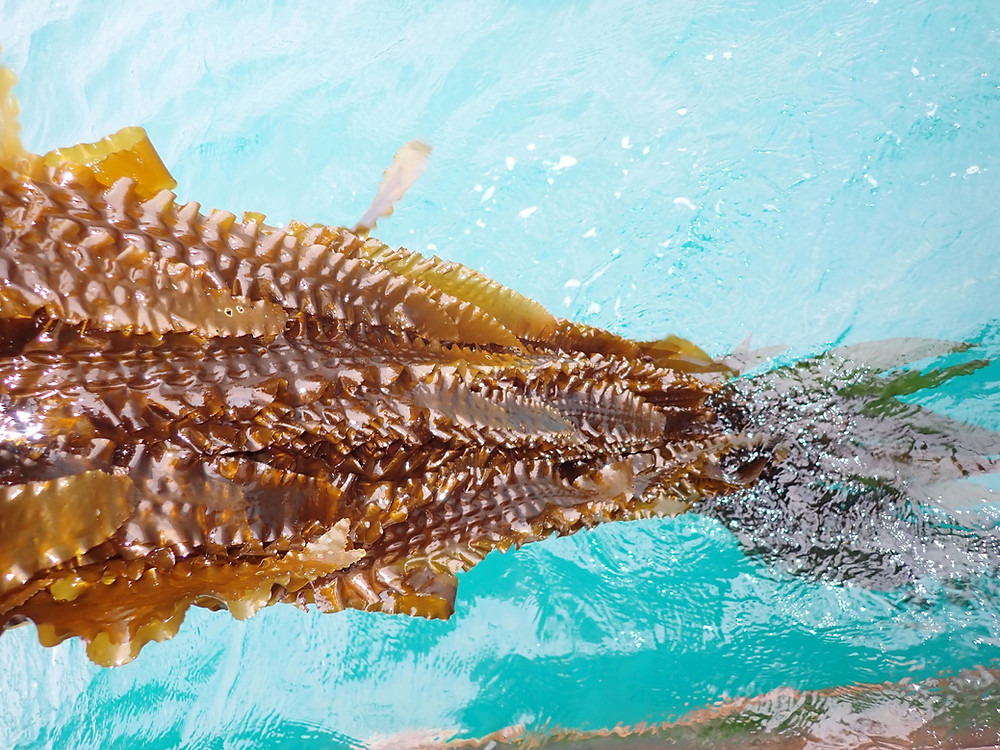- Amy Pilsbury
SEAWEED, SEAWEED, SEAWEED!
Updated: Jun 23, 2020
PhycoMexUK have teamed up with a wonderful seaweed farming project in Cornwall.

Kelp lines, Cornwall (Photo: Caylon la Mantia)
We have joined part of a fantastic #TeamSeaweed (@SeaweedSW) who are looking at all things seaweed in the South West. The group includes partners from University of Exeter, Plymouth Marine Laboratory, Marine Biological Association, Cornish Seaweed Company and Westcountry Mussels of Fowey.

Some of the seaweed team in action (Photo: Cat Wilding)
Seaweed is becoming of growing interest as a healthy and sustainable food source and is expected to play an important role in new diets. It is proving to be favourable due to its fast growth rates and the lack of need for land, freshwater, fertiliser or pesticides.
The University of Exeter project, led by Dr Ian Ashton (@IanAshton), is investigating the sustainable optimisation of sugar kelp cultivation at a pilot scale and will take into account the benefits that seaweed farms could have on the environment including improving water quality and habitat provisions for other species. This work will also consider the integration of seaweed into existing shellfish aquaculture with the aim to support local producers.

Kelp lines (Photo: Cat Wilding)
Nutrient rich waters and a large coastline make the UK a prime location for seaweed farming. The project is partnered with an innovative seaweed farm, in Cornwall, run by the Cornish Seaweed Company (@CornishSeaweed), where they are trialling seaweed cultivation. They are working with scientists to discover how sustainable aquaculture developments could interact with their wider environment.
PhycoMExUK and the Seaweed project
PhycoMExUK project leader, Professor Mike Allen (University of Exeter and Plymouth Marine Laboratory), is a collaborator on the seaweed project and provides a great link between the two. We have been receiving bags full of kelp from the kelp lines to run through our thermal processes (unfortunately we missed the last trip out to see them for ourselves, but have been told they are growing well!). We are going to use the kelp form the seaweed farm to take a look at a few different things.
We want to find out:
1. Whether the seaweed holdfasts can be processed - The holdfast is a root-like structure which attaches the kelp to a surface. Unlike roots the seaweed doesn't absorb nutrients or moisture through it. If we can process holdfasts, it would be beneficial to create more continuous processing systems in the future and remove the need for expensive and time consuming holdfast removal.

A young kelp holdfast on the lines (Photo: Cat Wilding)
2. What the best life stage if for harvesting kelp in terms of creating the most viable processing system - The seaweed is converted into lots of useful products, we want to find out how long the kelp should be grown before being harvested to give us the best yield.
A wonderful seaweed group (#TeamSeaweed) has formed with scientists, researchers and organisations studying the benefits of seaweed farming and discovering new ways to the biomass for useful products. It is proving to be a really exciting project in the South West.
Hopefully, we will all be back to work soon and we can take another visit to see how the kelp has grown. Stay tuned @PhycoMExUK and follow the incredible work of the project @SeaweedSW.

